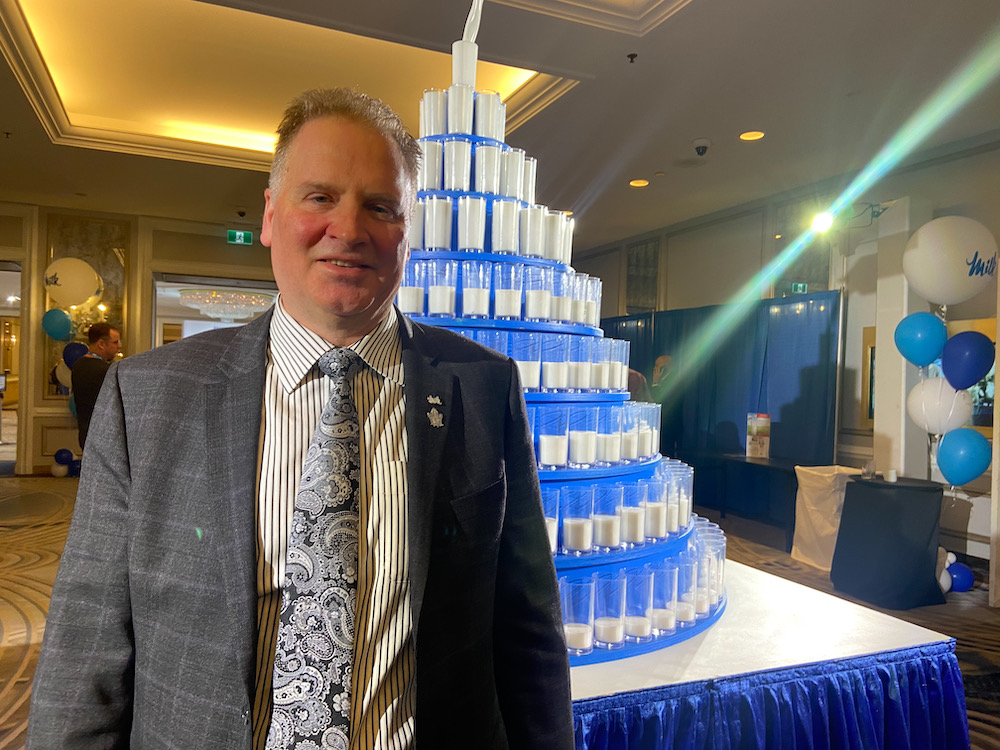Hamel new leader of Dairy Farmers of Ontario

Mark Hamel has been elected the new chair of the board for Dairy Farmers of Ontario.
Read Also
Mycotoxin situation returns in 2023
Before the planter or drill rolls into a field, there’s hope that rain and sun will be timely and sufficient,…
The Bruce County dairy farmer and representative of Region 11 moved up from first vice-president when Murray Sherk stepped down at the Dairy Farmers of Ontario (DFO) annual general meeting this week.
Sherk, who farms near Plattsville, had been on the board for 12 years.
Why it matters: Milk production is the largest single commodity farm-gate agriculture product in Ontario at about $3 billion in value in 2023.
There were numerous tributes to Sherk during the annual meeting program and the recognition banquet.
Lisa Thompson, Ontario’s minister of Agriculture, Food and Rural Affairs recounted a time when she called board chairs together to deal with an urgent matter.
“When Murray chose to speak, his message was absolutely direct. It was spot on, and it made a difference,” she said during the banquet.
Sherk led the DFO board through the COVID-lockdown-induced supply challenges for dairy products, including a significant increase in demand for milk and butter. During his meeting remarks, he recounted 12 major issues dealt with during his 12 years on the board and they were significant. They included the pandemic, trade deals including CUSMA and CPTPP, growth in the demand for butter products and the resulting challenges from greater amounts of milk solids other than fat (called solids-not-fat or SNF), which don’t have as much value as butterfat. A significant policy change created a different pricing class for those products and resulted in much ire from Americans.
Sherk plans to spend more time on his farm and his family.
Roger Boersen, DFO board member for Region 10 was elected as vice-chair and Don Gordon, Board Member for Region 5, was elected as second vice-chair.
SNF investments
There’s some optimism that the challenge of dealing with solids-not-fat (SNF) in the dairy industry will become easier with hundreds of millions of dollars in funding going to processors.
When processors use dairy fat to make various dairy products, such as butter, the milk solids that aren’t fat are leftover.
Increased demand for butter and other processed dairy products in the past decade has created a larger surplus in SNF.
The Canadian dairy industry had tried to deal with the excess by creating a lower-priced class of milk product which then began to be shipped to the U.S., but that loophole was closed when the Canada-U.S.-Mexico (CUSMA) Free Trade Agreement was ratified in 2020.
“There’s been a significant demand increase in demand for cream butter and cheese in recent years,” said Sherk at the DFO annual meeting. “But processing and finding markets for all components in a trade-restrictive environment has been a challenge to solve.”
The federal government has created a $333 million fund out of some of the CUSMA compensation funds that will be used for processors, especially around creating manufacturing for SNF.
There’s also a national market growth program resulting from agreement across the P10 – the national milk pool that will help to allocate milk and encourage market growth, also focused on SNF.
Lactanet changes structure
Lactanet, the national milk and genetics recording and laboratory testing company for dairy farms will no longer will have provincial delegates.
In Ontario, DFO delegates could automatically vote on resolutions at the Lactanet annual meeting. Bylaws were passed at the Lactanet Ontario annual meeting, held in conjunction with the Dairy Farmers of Ontario annual meeting, that will eliminate the need for an annual meeting with delegates. Instead, DFO will appoint one board member and one other dairy farmer to the Lactanet board of directors, and Lactanet will then report to the DFO board (and other milk boards across the country).
Source: Farmtario.com

